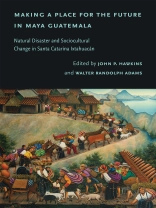In 1998, Hurricane Mitch pounded the isolated village of Santa Catarina Ixtahuacán in mountainous western Guatemala, destroying many homes. The experience traumatized many Ixtahuaquenses. Much of the community relocated to be safer and closer to transportation that they hoped would help them to improve their lives, acquire more schooling, and find supportive jobs. This study followed the two resulting communities over the next quarter century as they reconceived and renegotiated their place in Guatemalan society and the world.
Making a Place for the Future in Maya Guatemala shows how humans continuously evaluate and rework the efficacy of their cultural heritage. This process helps explain the inevitability and speed of culture change in the face of natural disasters and our ongoing climate crisis.
Sobre o autor
Walter Randolph Adams received a Master of Science in nutritional anthropology from the University of Pennsylvania, a Ph D from Michigan State University, and a Master of Public Health from Concordia University. He codirected BYU’s long-term field school in Nahualá and Santa Catarina Ixtahuacán with John P. Hawkins.












